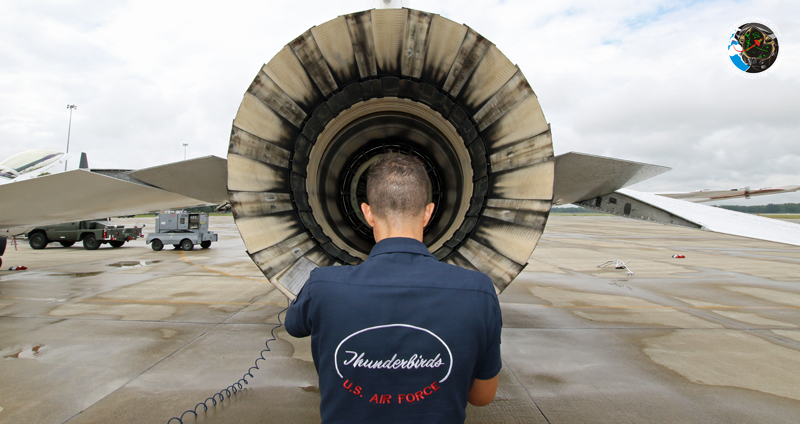A Lot Goes Into Making a USAF Thunderbirds Flight Demo Happen; Here is Some of the Advanced Preparation.
Selfridge Air National Guard Base in Mt. Clemens, Michigan in the U.S. celebrated their 100th Anniversary with the Team Selfridge Open House and Air Show on Aug. 19 and 20. As a major U.S. airshow the event featured displays celebrating both U.S. Air Force history that showcased current and future operations at Selfridge and throughout the Air Force. As with many important airshows at Air Force facilities throughout the season the U.S. Air Force Thunderbirds were the headlining performers at the show.
We got an insider’s look at the U.S. Air Force Flight Demonstration Team, The Thunderbirds, arrival and preparation for the big weekend prior to the show. Selfridge Air National Guard Base Public Affairs team, including USAF MSgt. David Kujawa, worked hard to get TheAviationist.com access to the Thunderbirds and a unique, behind-the-scenes look at their support team days before the airshow.
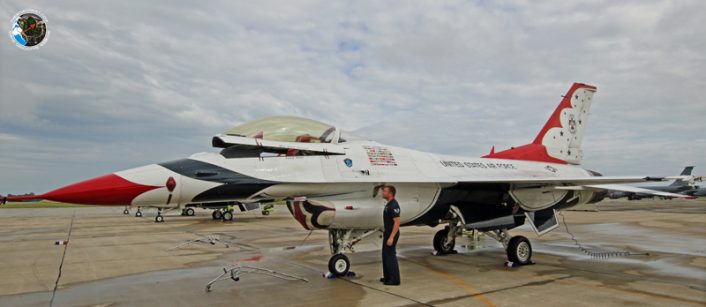
The Thunderbird’s arrival at Selfridge ANGB on Thursday, Aug. 17, two days before the show was unique since the team faced the combined challenges of flying all the way from their home base at Nellis AFB outside Las Vegas, Nevada and arriving at Selfridge ANGB in bad weather.
Thunderstorms and high winds buffeted the base and airshow venue early on arrival day. A KC-135T Stratotanker from the 171st Air Refueling Squadron at Selfridge ANGB launched early on Thursday from Michigan to support the Thunderbirds flight from Nevada to Michigan. After their rendezvous over the western U.S. the Michigan based tanker crew conducted three midair refuelings for each of the five Thunderbird F-16’s on their way to Selfridge. The sixth aircraft was already on station at Selfridge.
Thursday was a combined media day for the Thunderbirds and Selfridge along with crew orientation to the venue; rehearsal and planning for the numerous appearances and activities the Thunderbirds participate in while at a demonstration venue.
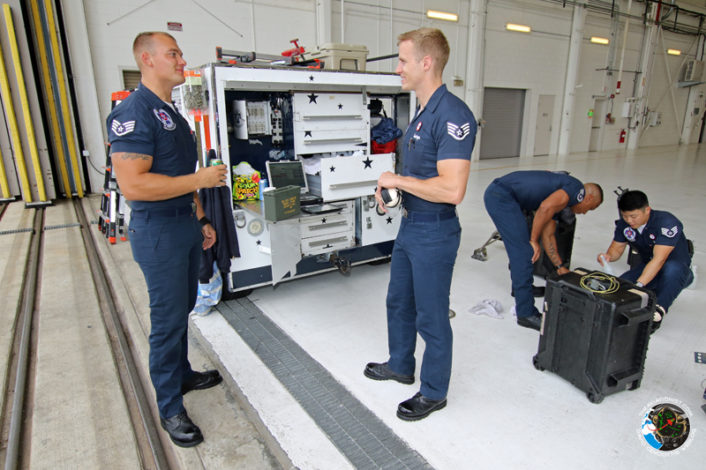
One mission of the Thunderbirds during their visit to Selfridge was a Hometown Hero flight with Dr. Brian Smith of Detroit, Michigan. Dr. Smith was chosen for a Thunderbird Hometown Hero flight for his unselfish service to community and his lifelong commitment to education. He has received Congressional recognition for his efforts to steer young people to a career in aviation. Dr. Smith is the First African American to get a Ph.D in biomedical engineering from Wayne State University in Detroit. He also studied the effects of IEDs on soldiers in conflict zones and the effects of aircraft ejection on pilots. Smith’s family has a long history of selfless service to the U.S. military. His father served in World War II including spending time in a prisoner of war camp.
“I was up all night, couldn’t sleep, I am so excited.” Dr. Smith told us. “I tried to take a nap earlier today. No luck. I just want to get up there. I’m hoping they let me control the aircraft briefly. I’m a licensed pilot. Maybe I can experience the high roll rate of the aircraft myself.”
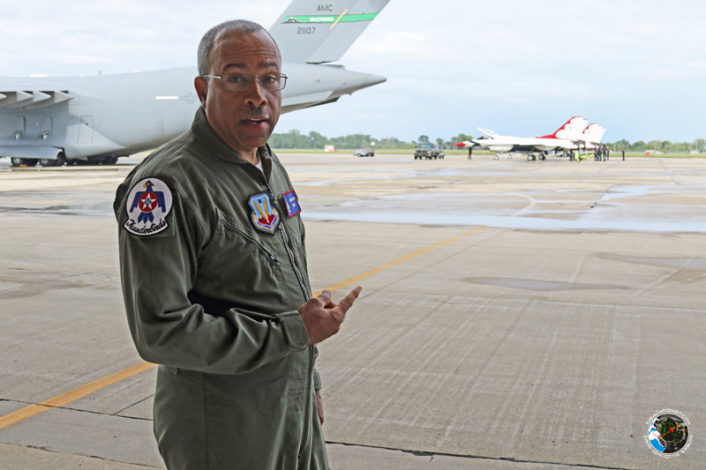
Dr. Smith’s flight was scrubbed on Thursday due to bad weather but he did fly on Saturday morning with the Thunderbirds.
During the ground rehearsal for the weekend’s demonstrations the Thunderbirds would be parked across the field from the show line and spectators at Selfridge. TSgt. William Russell, a Thunderbird Crew Chief from Burlington, Vermont, told TheAviationist.com, “We’re going through the grey launch process rehearsal. It’s what we use to prepare aircraft for arriving at or leaving a show state.
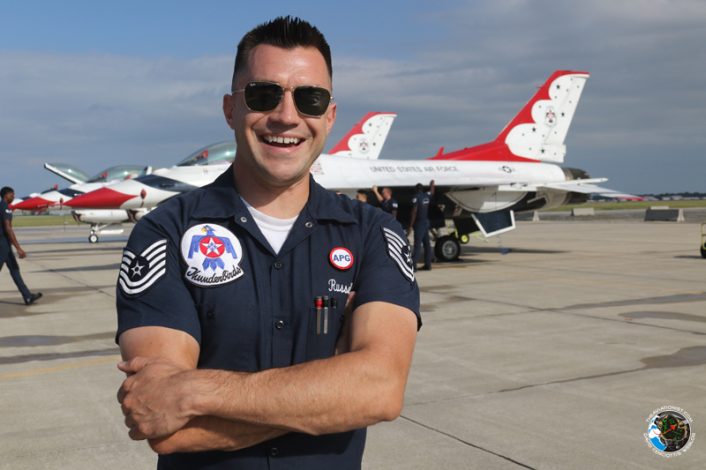
A significant amount of time on Thursday was spent with Thunderbird crews drilling on the ground demonstration portion of their show. The choreography and precision you see with the ground crew is difficult to achieve and requires frequent practice to maintain, so Thunderbird personnel are constantly training the procedures that are more regimented versions of the same launch protocols used for a combat F-16 unit in the Air Force.
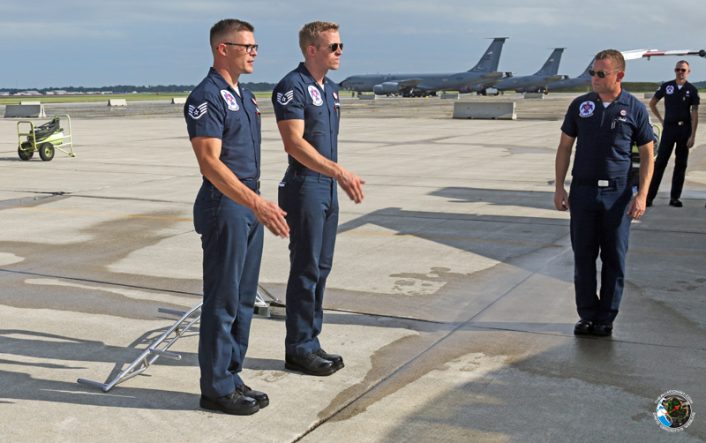
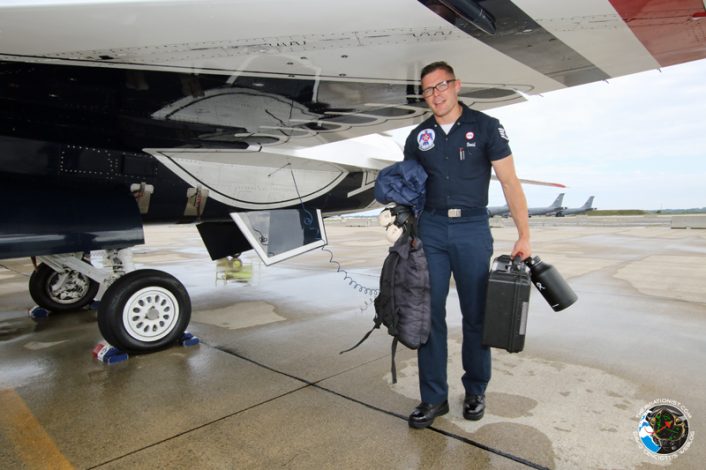
The day was quiet as weather moved in and the Thunderbirds closed up their aircraft after performing regular maintenance and their training on the tarmac. Pilots in ready rooms held meetings for the flight demo and made plans for interfacing with the public throughout the demanding show weekend. It was an interesting look inside the process of the team getting ready for a typical Thunderbird airshow weekend.
H/T to Lance Riegle for the help with the video

